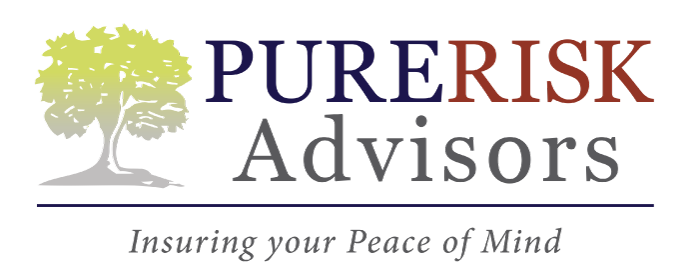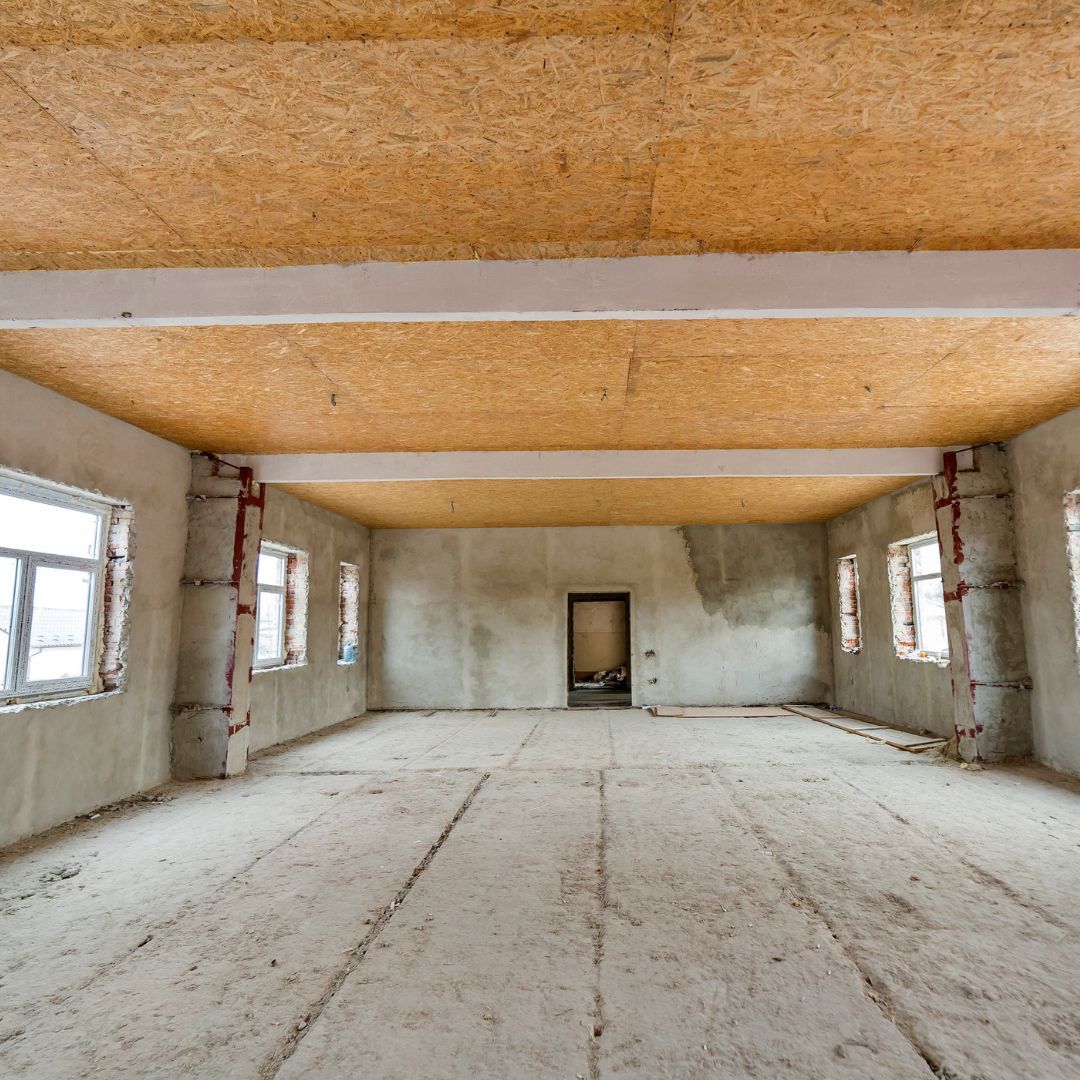The Real Cost of Underinsuring a Multi-Family Property in Colorado
See How We're Different
or call us: 303-834-1001
Colorado’s apartment buildings and condominium complexes are enjoying record demand, yet rising replacement costs, an evolving risk environment, and rapid population growth are also making it more complicated—and more expensive—to insure them properly. Many owners look for ways to trim expenses, and insurance premiums can seem like a tempting target. However, a policy limit that lags behind true exposure can create hidden liabilities that emerge only after a disaster. A close look at current market data shows that underinsurance is widespread and, in some cases, severe enough to threaten the long-term viability of an investment.
Research from the Insurance Information Institute indicates that roughly 45 percent of commercial property owners nationwide are underinsured by 20 percent or more. In Colorado, where construction inflation outpaced the national average by nearly four percentage points in 2023, the gap is often larger. Underinsuring to save a few thousand dollars a year can ultimately cost hundreds of thousands when fire, hail, or water damage strikes. The following analysis explores why Colorado’s multi-family sector is particularly vulnerable, what kinds of losses an owner might face, and how to avoid the financial pitfalls of insufficient coverage.
Understanding the Concept of Underinsurance
Underinsurance occurs when a policy’s stated limit does not match the actual cost to repair, rebuild, or replace damaged property. Unlike an under-market sale price, which may simply reduce profit, an underinsured loss leaves the owner responsible for expenses that must be paid out of pocket. In practice, that means the insurer will pay only up to the limit—even if contractors estimate a substantially higher figure. Deductibles, coinsurance penalties, and business-income shortfalls further widen the gap, turning what once felt like a small discrepancy on paper into a major drain on operating cash.
Coinsurance clauses—which typically require coverage equal to 80, 90, or 100 percent of replacement cost—can magnify the problem. If the policy limit falls short of the required threshold, the carrier can apply a proportional penalty even when the loss is partial. For example, insuring a $10 million building for $7 million when the clause calls for 90 percent coverage leaves any claim subject to a 22 percent reduction, applied before the deductible. Many owners discover this only after a costly hailstorm or kitchen fire, underscoring the importance of accurate valuations.
Moreover, the implications of underinsurance extend beyond immediate financial strain. Businesses may find themselves unable to recover fully from a disaster, leading to prolonged operational disruptions. This can result in lost customers and diminished market presence, as clients may turn to competitors who can offer more reliable services. Additionally, the emotional toll on business owners facing unexpected financial burdens can be significant, as they grapple with the stress of managing repairs and the uncertainty of their future. Understanding the nuances of insurance policies and seeking professional guidance can help mitigate these risks and ensure that businesses are adequately protected against unforeseen events.
In today's rapidly changing economic landscape, the cost of materials and labor can fluctuate dramatically, making it essential for property owners to regularly reassess their coverage limits. Failing to do so can lead to a false sense of security, where owners believe they are adequately insured based on outdated valuations. Engaging with insurance professionals to conduct periodic reviews and adjustments can help prevent underinsurance and ensure that property owners are prepared for any eventuality. This proactive approach not only safeguards assets but also fosters a resilient business environment, capable of weathering the storms of uncertainty that often accompany property ownership.
Colorado’s Unique Risk Landscape for Multi-Family Properties
Colorado combines high elevation, dry climate, and dramatic temperature swings—conditions that foster both severe wildfires and powerful hail events. The Rocky Mountain Insurance Information Association lists Colorado as the second-highest state for hail losses, averaging more than 300 hailstorms per year. In 2023 alone, insured hail losses surpassed $1.5 billion statewide, with a significant portion sustained by multi-family roofs, HVAC systems, and exterior façades.
Wildfire frequency is also on the rise. The Marshall Fire of December 2021 destroyed or damaged more than 1,000 structures in Boulder County, and the Colorado State Forest Service reports that the average annual acreage burned has doubled since the early 2000s. Even urban infill properties, once thought immune, now carry elevated fire exposure as wind-borne embers can travel miles ahead of a flame front. Multi-family complexes typically rely on shared utilities and tight parking, creating additional ignition sources and evacuation challenges.
Finally, construction labor shortages and supply-chain disruptions have made post-loss rebuilding both slow and expensive. The Associated General Contractors of America documented a 16 percent year-over-year increase in Denver metro construction wages, while material costs for lumber, steel, and electrical components climbed between 12 and 28 percent. Such inflationary pressures render yesterday’s coverage limits obsolete, and they do so far faster than many renewal schedules anticipate.
The Financial Consequences of Being Underinsured
When disaster strikes an underinsured multi-family property, the impact cascades through repair budgets, rental income streams, financing covenants, and even owner equity. Losses seldom confine themselves to a single line item; they ripple across multiple balance-sheet categories, frequently compounding as delays push schedules beyond planned contingencies. Understanding the specific ways underinsurance drains capital can help owners assign tangible dollar amounts to what otherwise feels like an abstract risk.
Costs fall into three broad buckets: direct physical damage, indirect or consequential losses, and compliance-related expenses. Each category carries its own multipliers that vary by location and building type. In high-growth markets such as Denver, Fort Collins, and Colorado Springs, those multipliers skew higher because local construction firms and code enforcement agencies face heavy workloads, lengthening project timelines and inflating bids. The following subsections break down the most common financial pain points.
Repair and Rebuilding Costs
The most visible consequence is the out-of-pocket expense required to restore damaged structures. If a 40-unit complex insured for $6 million sustains a partial fire loss requiring $3 million in repairs, but the building’s true replacement cost is $8 million, a typical 90 percent coinsurance clause could limit carrier reimbursement to roughly $2.25 million after deductible. The owner must then fill the $750,000 gap—capital that often comes from reserves earmarked for future improvements or from emergency loans at unfavorable interest rates.
In addition, local building codes may mandate upgrades not present in the original design. For instance, Boulder County’s 2022 adoption of more stringent energy-efficiency standards requires high-performance insulation and electric vehicle charging readiness for major reconstructions. Unless a policy includes ordinance-or-law coverage with adequate sublimits, these upgrades become the owner’s responsibility. Recent surveys by the National Multifamily Housing Council show that code-driven change orders add 8 to 14 percent to renovation budgets, costs rarely accounted for when policies are underwritten.
Lost Rental Income and Vacancy Surcharges
Even a well-capitalized owner may underestimate how long units remain offline after catastrophe. Claims data gathered by a leading national carrier indicate that multi-family fire losses in Colorado take an average of 14 months to close, with half lasting longer than 18 months. Business-income coverage, also known as loss-of-rents, can bridge the gap—but only if limits mirror real-world cash flow and if the coverage window is long enough. Underinsured income endorsements may run out months before residents are able to return, forcing owners to absorb mortgage payments, utilities for vacant space, and emergency marketing to attract new tenants.
Meanwhile, many lenders impose vacancy covenants that trigger higher interest spreads or sweeping cash-management controls when occupancy falls below a set threshold. If a 25 percent vacancy surcharge activates because half the units are offline, monthly debt service can spike precisely when revenue disappears. Owners who relied on optimistic restoration timelines when setting business-income limits may find themselves injecting personal capital or selling the asset at a discount.
Lender and Investor Implications
Commercial mortgage agreements routinely require full replacement-cost coverage plus business-income limits equal to 12 to 24 months of gross potential rent. Failure to comply can place the loan in technical default, enabling the lender to demand immediate remediation, increase reserves, or in extreme cases accelerate repayment. A 2022 audit by a Denver-based regional bank found that 17 percent of its multi-family portfolio carried inadequate insurance, prompting mandatory force-placed policies at premiums 30 to 50 percent higher than market rates.
Equity partners evaluate risk not only in terms of asset protection but also reputational impact. Syndications advertised through crowdfunding portals or Regulation D placements often include explicit language allowing capital calls if insurance proves insufficient. Projects that stumble due to underinsurance may find it harder—and more expensive—to raise funds for subsequent acquisitions. Over time, capital markets penalize sponsors whose track records show uncovered losses, eroding competitive position in a supply-constrained state like Colorado.
Regulatory and Legal Ramifications
Beyond financial stress, underinsurance can expose owners to legal claims from tenants and regulatory bodies. Colorado’s Warranty of Habitability requires landlords to provide safe living conditions within a reasonable period after damage. Courts have interpreted “reasonable” as 30 days in many situations. If underinsurance lengthens repair timelines, tenants may sue for rent abatement, relocation costs, or even consequential damages. The Colorado Apartment Association notes a 22 percent year-over-year increase in habitability lawsuits following the 2021-2022 wildfire season.
Insufficient liability limits can exacerbate court awards. Suppose a tenant injured during a partial building collapse claims that delayed repairs contributed to the accident. If general-liability or umbrella coverage is as thin as the property coverage, the owner’s personal assets may be at risk. Similarly, homeowners’ associations managing condominium builds may fail fiduciary duties if they knowingly approve policies below replacement cost, opening board members to derivative actions.
Common Causes of Coverage Gaps
Underinsurance rarely stems from a single miscalculation. More often, a cluster of oversights and market pressures converge. The most frequent culprit is outdated replacement-cost estimations. Carriers typically rely on software models calibrated annually, yet Colorado’s construction cost index rose 11 percent in the first half of 2023 alone, outpacing modeling updates. Unless owners commission independent valuations, renewal limits may lag true exposure by several million dollars after only two or three policy terms.
A second driver involves misunderstanding policy language, especially around coinsurance and sublimits. Many investors inherit insurance programs from prior owners and assume broad coverage, not realizing ordinance-or-law, debris removal, and sewer-backup sublimits can fall well below actual needs. In multi-family settings where units share plumbing stacks and electrical conduits, water damage and code upgrades become particularly expensive.
The final factor is premium sensitivity. As carriers adjusted rates upward following consecutive years of wildfire and hail losses, some owners increased deductibles or trimmed business-income endorsements to keep budgets flat. While that strategy may improve short-term cash flow, it effectively shifts catastrophic risk to the balance sheet. The decision often ignores how property-tax reassessments and rent-control debates may already compress margins, creating a compounding effect that shows up only after a claim.
Strategies to Accurately Assess Property Value and Exposure
Closing the insurance gap begins with a rigorous, multi-layered valuation process. Owners can start by collecting detailed construction data: square footage, building height, framing type, roofing materials, mechanical systems, and unit-level finish grades. Feeding these inputs into a reputable cost-estimator platform—such as RSMeans or CoreLogic—yields a baseline replacement cost reflective of current labor and material pricing in Colorado’s Front Range and Western Slope regions.
Next, inflation guards or automatic limit-increase endorsements can protect against mid-term cost spikes. Typically, these provisions adjust limits by 4 to 8 percent per year, but contracts can be negotiated for higher percentages in volatile markets. Pairing them with quarterly internal reviews of construction-price indices ensures that significant gaps do not develop between policy anniversaries.
Finally, benchmarking against peer properties helps validate assumptions. Industry reports from the National Apartment Association and CBRE regularly publish average per-unit construction costs segmented by class and region. If a new build in Colorado Springs averages $275 per square foot yet a similar 2015 property is insured for only $180, red flags should prompt deeper analysis. Peer benchmarks offer a practical reality check that software modeling alone cannot provide.
The Role of Professional Appraisals and Risk Assessments
Independent appraisers and risk engineers add a layer of expertise that raw data cannot match. A certified appraisal accounts for site-specific variables—steep slopes, limited staging areas, and specialized finishes—that inflate rebuild costs. In a 2023 survey conducted by a national brokerage, professionally appraised properties were 32 percent less likely to be underinsured than those relying solely on carrier tools. Although a commercial appraisal may cost between $4,000 and $7,500, that fee is minor compared to a six- or seven-figure shortfall during reconstruction.
Risk engineering services focus on loss-prevention measures and corresponding insurance credits. Installing Class 4 impact-resistant shingles, adding monitored water-leak sensors, or upgrading fire-suppression controls can each shave between 5 and 15 percent off premiums. Such improvements not only lower insurance costs but also reduce the probability of large claims, ensuring that coverage purchased at the correct limit remains affordable over time.
Balancing Premiums and Protection: Cost-Benefit Analysis
An evidence-based approach can frame insurance as an investment rather than a sunk cost. Consider a scenario where increasing limits and business-income coverage adds $12,000 in annual premium but protects an additional $3 million in exposure. The expected-loss value—calculated by multiplying potential loss by probability—often exceeds the incremental premium, particularly in high-risk zones mapped by the Colorado State Forest Service or FEMA flood models. A sensitivity analysis that examines 5-, 10-, and 20-year horizons usually shows that adequate coverage delivers a positive net present value even under conservative cash-flow projections.
Financing structures can also offset added premiums. Some lenders offer interest rate discounts of up to 25 basis points for properties with robust loss-control programs and full replacement-cost coverage, effectively paying for the premium increase through lower debt service. Additionally, owners can negotiate higher deductibles paired with deductible-buy-down policies or captive arrangements, striking a balance between everyday claims management and catastrophic protection.
Conclusion: Protecting Long-Term Asset Value
Underinsurance may feel invisible during stable market cycles, yet it becomes starkly tangible after the first major storm, fire, or flood. Colorado’s multi-family owners contend with a rapidly evolving risk landscape marked by construction inflation, severe weather, and stringent building codes. A shortfall in coverage does more than jeopardize a single project; it can derail financing, tarnish investor confidence, and dismantle years of portfolio growth.
Accurate valuations, professional appraisals, and proactive policy design transform insurance from a reluctantly paid expense into a strategic safeguard. The relatively modest cost of fuller protection pales next to the potential multimillion-dollar liability of rebuilding a community from a position of financial disadvantage. By confronting the real cost of underinsuring and committing to comprehensive coverage, Colorado’s property owners preserve not just structures, but also the financial security of residents, investors, and the broader communities they serve.













